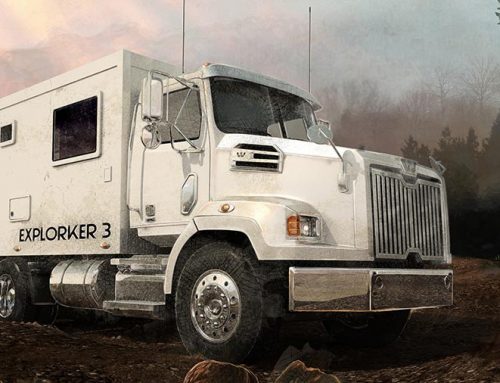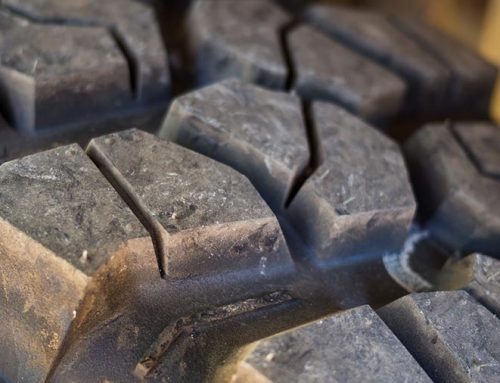
When we were renovating the RV, we thought we had it ALL figured out and we couldn’t have been more wrong. In this video, Leanne claimed that living in the RV would reduce our living costs by at least half. And… well… that’s not a thing.
When we started living in Explorker2 full time, we decided to track all of our expenses (out of curiosity) and see just how less costly it was to live full-time in an RV.
Everyone will tell you that this life comes with its ups and downs. And, they’re right. They’ll also tell you that living this way costs less… and that makes sense… until you move into an RV, track your expenses for 6 months and see just how WRONG these people really are.
If you haven’t already guessed it, our living expenses of living in the RV full time have been more than living in a house full time.
We’ve been living in our RV for 8 months and when we compiled these 6-month expenses, we were pretty taken back by the whole thing. We’ve spent 2 months trying to figure it all out and have come to a bunch of conclusions… so here we go!
Note: Our grocery bills, insurance, healthcare, and the like have not changed since moving into the RV. So, we chose not to include groceries, cell phones and insurance in these cost comparisons.
Total cost of living in a 2004 renovated 40-foot motorhome for 6 months = $29,825.84 USD
Average monthly cost = $4,970.97
*this includes RV payment, insurance, diesel, propane, upkeep, and RV park accommodations when we aren’t on public land
Total cost of living in a 2,300 square foot home in Alberta Canada for 6 months = $19,080.38 USD
Average monthly cost = $3,180.06
*this includes mortgage, electricity, insurance, waste collection, property tax, fixing things, landline
Yeah, so that happened. $10,745.46 more expensive living in an RV than a house over a 6-month period.
While the cost of living wasn’t the only motivating factor for us choosing this life, it was one of the reasons we made the switch.
But here’s the thing… the BIG thing. And something we’ve had to remind ourselves of constantly over the last 6 months: We take care of our rig. When things are broken, we fix them. And, when you buy a rig you won’t always know if the unit you’re buying was properly cared for until you get in it. When we bought our RV, things were broken. And yeah, the dealership that sold her to us wasn’t overly honest about the whole thing, but we knew what we were getting ourselves into. Now, we’re working to get her in the best shape of her life, so that she lasts a LONG time. So sure, there’s some upfront cost for us, but the peace of mind knowing she can run for a very, very long time makes us happy!
Here are the major (non-negotiable) expenses that we’ve incurred over the last 6 months that have inflated our living costs quite considerably:
Air leveling balancing – $315.00
Disconnector switches – $210.00
Moving the coach batteries to the back compartment to make way for more house batteries – $1,575.00
New windshield – $1,637.38 (we have insurance on this now)
Double battery bank – $804.00
Drive shaft replacement – $1,418.23
Battery monitoring kit – $1,365.00
Can you live in an RV without these costs? You bet. Get a little van, get a good generator, a solar panel, and know your life is about to do a complete 180. That’s not of interest to us. So instead, we pay for maintaining and upgrading our rig to make it off grid compatible knowing that our RV life has limitations.
Silver lining? On months where we aren’t fixing something that’s broken and we stay on public land for most of the month, our monthly RV living cost is $721.03. On months where we aren’t fixing something and stay primarily in RV parks, our monthly RV living cost is $1,780.92.
So, minus the big ticket items, we’re not feeling too bad about the whole thing.
We hope you haven’t ready this post and immediately started questioning your ability to live full time in an RV. Here are a couple of MAJOR lessons we’ve learned that have already massively cut back on our expenses in months 7 and 8:
- Find Free Places. When we first started, we didn’t know much about BLMs and free camping so we were staying at RV parks mostly. We’re getting better at it now. Our favorite apps are Campendium, iOverlander, All Trails and AllStays.
- Dump and Move On. When we first started, we didn’t know that we could dump our tanks at RV parks for around $10. We would book the site for $40 to $50 and stay the night, dump our tanks, and check out the next morning. MANY RV parks will allow you to stop in for a couple of moments, dump your grey and black tanks, fill your fresh, sometimes even do a bit of laundry, and hit the road again.
- Stay Put Awhile. We’ve done a lot of driving in the last 6 months, going all the way from Alberta Canada to Florida with about 15 states in between. We’ve spent an astronomical amount of money on gas. If we wanted to cut down on our expenses, staying stationary for longer periods of time would be ideal.
We’ll check in with ya’ll in another 6 months. Think we can get costs down? We’ll sure try! I’m thinking we can come in under $18,000. Wish us luck, and see you soon!



Leave A Comment